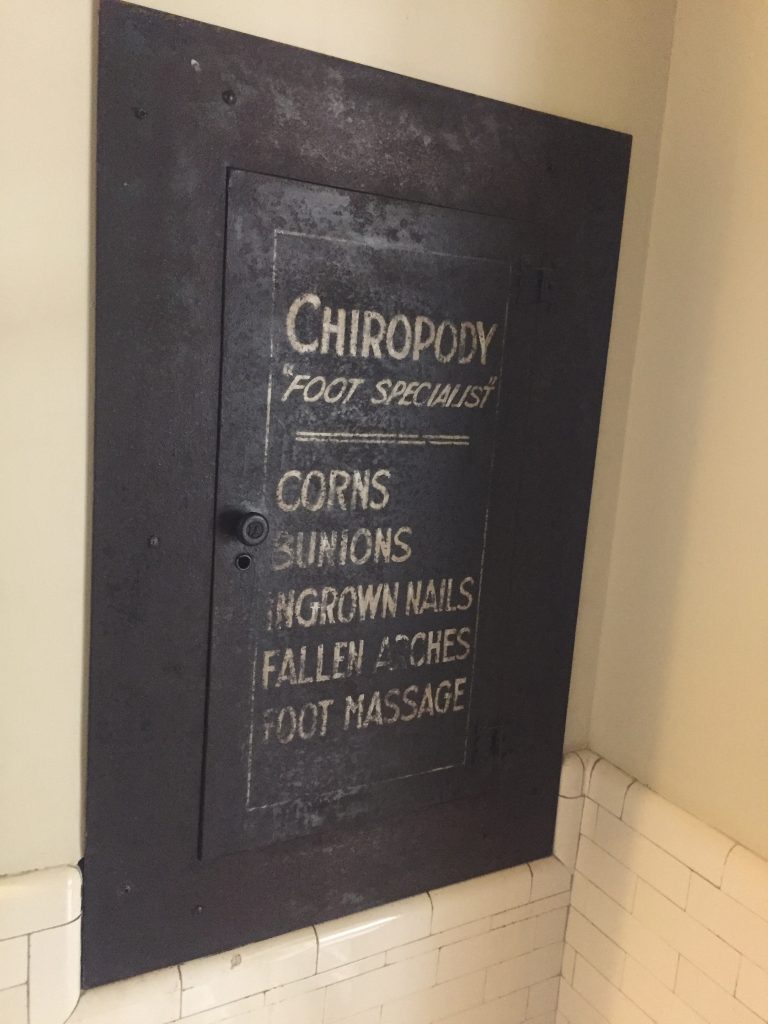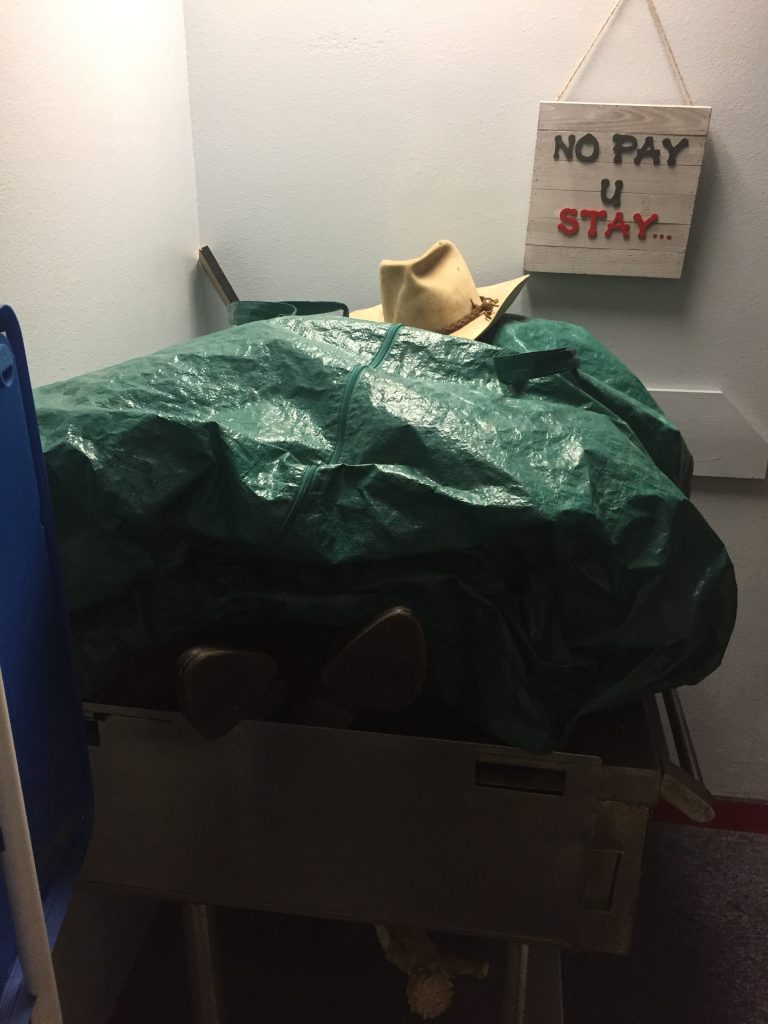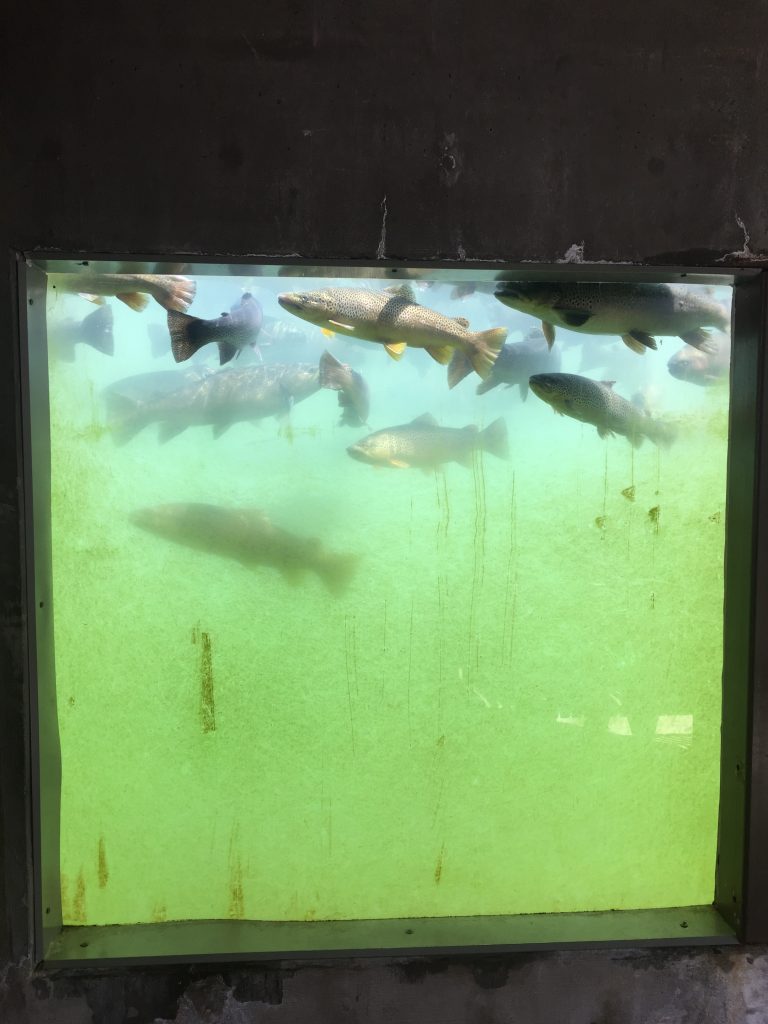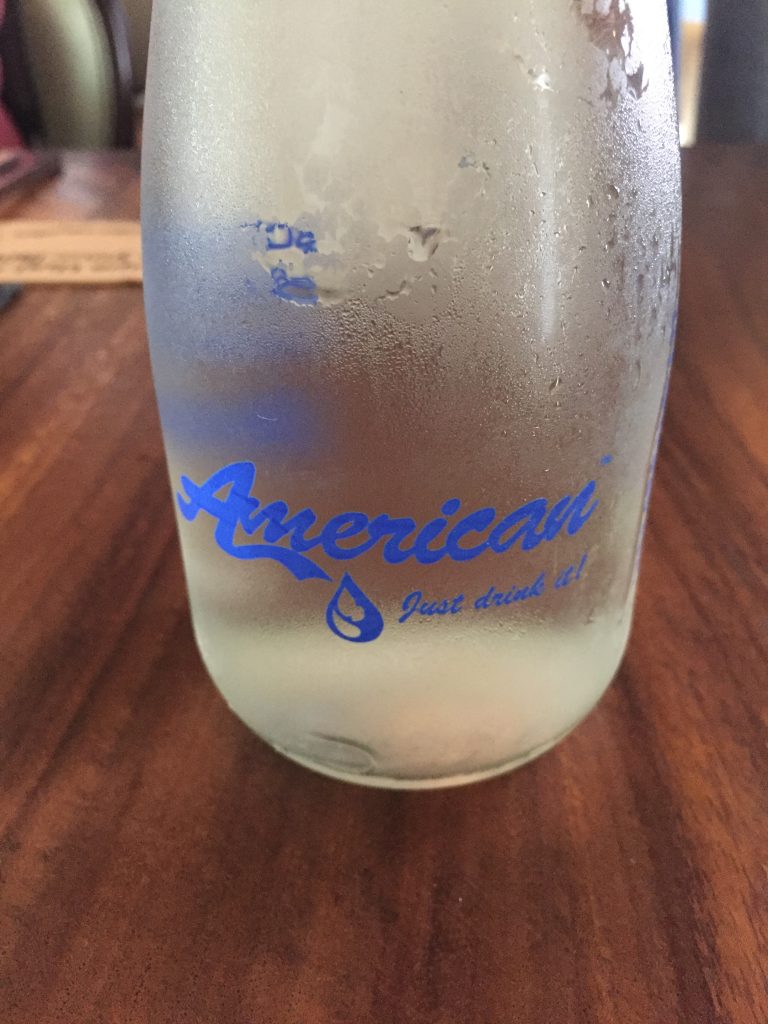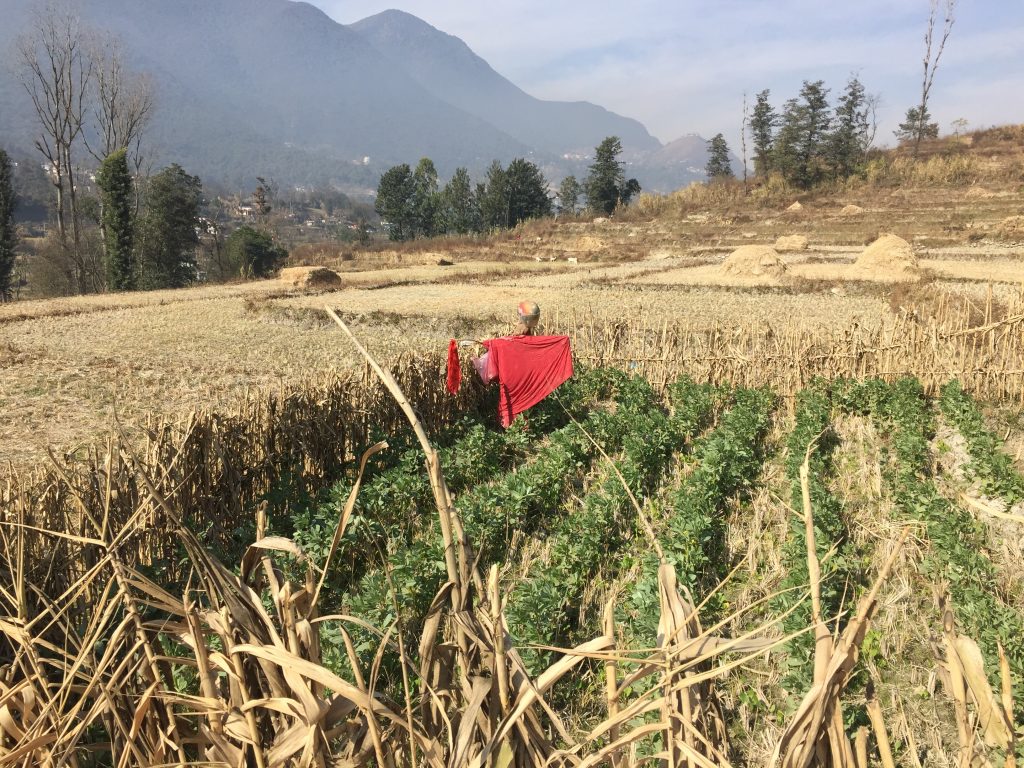
Out in the far west of Minnesota, hills and forests settle to flatland and, eventually, to pavement. A mile out, the air becomes thick with the chemical smell of cracked asphalt but I recognize ‘The Lotland’ from a longer ways off, the autumn’s unseasonable warmth releasing heat shivers into the atmosphere above. A multisensory mirage of a mirage, ‘The Lotland’ doesn’t look the way it should from a distance, but it doesn’t look like anything else either.
‘The well-traveled will have heard numerous variations on the American gold paradise, the recessive specter, no doubt, of its violent colonizers (their lust for treasure, their violent means). An exhaustive study of its supposed manifestations would fill several novels, suffice to say that the great American jackpot is not a where so much as it is a will-o-wisp: shiny, ever-distant, and ultimately fatal. The truth of the matter is that humanity understood the price of gold from the days of human sacrifice- wealth arrives at the expense of others. For all our great humanitarian leaps, ‘civilization’ is really just the understanding that the requisite death need not be a spectacle.
All this to say that ‘The Lotland’ is famous only for being one of the few remaining question marks on the map. It is a paved wasteland so vast that its peculiar heat signature plays tricks with satellite imagery and so distant that no locality can be pinned with ownership. The terrain is unapologetically grim, such a scab on the earth that most life is instinctively repulsed. Those few that can’t help but pick at it are sure that a parking lot so massive must serve something equally immense at the center and they seek this thing, disappearing with such confidence that their boisterous mortality furthers the legend- a series of celebratory sending-offs and muted, off-screen deaths.’
There is an aspect of me that is drawn to these sorts of things- a curiosity that supersedes health. Luckily, I’ve survived long enough to recognize the tendency and to mitigate it. Perhaps unluckily, the mitigation has taken the form of walking up to a theoretical point-of-no-return rather than crossing it entirely and so, in approaching ‘The Lotland,’ I am constantly performing the subtle calculations of the impoverished traveler, checking and re-checking mileage and gas and water and food, considering, even, the slope leading toward my destination and how it will make coasting out impossible. All this tedious worry to avoid what is abundantly clear: the safest course of action is to avoid the wasteland entirely.
I park at the turnoff and make a few final notes. I chalk the gas gauge, erect a small flag from sticks and a bright orange cap I picked out from a gas station discount bin. I set off into ‘The Lotland’ and immediately understand why a person might lose themselves here: freedom.
The stretch of interstate previous to ‘The Lotland’ is a single straight shot, the landscape a repeating cartoon backdrop and the sky an unbroken blue. The interstate system as a whole is a series of relatively straight lines and, given a fixed destination, the choices one makes there are mostly arbitrary – there is, at most, the short way, the scenic way, and sometimes the detour. Arguably, ‘The Lotland’ presents two choices: inward or outward but, in practice, the choices are endless.
There are lines painted along the pavement of ‘The Lotland’ that present guidelines for traffic and parking, but they quickly lose meaning as I attempt to keep my exit ‘flag’ directly behind me. When the orange cap disappears in the shimmering distance, I stop for a drink of water and try to discern where the lines would have me go, finding they mean less than I had even considered. Some branch in a pattern that appears meaningful and others would guide a vehicle in endless circles. ‘Exit’ is painted on the ground in several places, each arrow pointing another direction which is true, in the sense that there must be technical exits on all sides, but dangerous in that several sides of ‘The Lotland’ must open onto fields where cars and motorcycles would struggle, further stranding the lost.
The map on my phone fails to load and the GPS struggles to make contact with its network, both situations I expected. Two old compasses twitch in the sun before agreeing on magnetic north. I mark the position of the disappeared flag and hop back on the bike. Plenty of fuel yet.
After an hour of driving in a relatively straight line I begin to notice cigarette butts on the ground and it isn’t until I stop to verify their reality that I realize how dizzy I’ve become with ‘The Lotland’s’ mirage. I stumble and stretch and close my eyes against the sun for a while. The butts are real and scattered about like frozen insects, occasionally turning over in the wind. I re-check the compasses and find that I’ve been veering east- a slight mistake that, over an hour, has probably put me a few miles off-course. I correct and remind myself to pay closer attention, staring out in all directions with my hand a visor to my forehead like a wide salute to ‘The Lotland’s’ trickery.
I find a skeleton after an hour- a skeleton car and a skeleton driver, both dead for a long time. To the extent that I allow myself to investigate I recognize that everything useful has already been taken. The last item of interest is a chalked compass on the dash that disagrees with both of mine entirely. Not a good sign. A sign so ominous, in fact, that I begin to consider turning back early and am congratulating myself on the personal growth when I notice the shadow of a structure in the man’s rearview mirror. Something is out there and it quickly overcomes my budding sense of caution.
The structure is a long way off and not at all in the direction I was planning to go. I’m sweating underneath my jacket by the time I cover the distance and confirm what I had begun to expect with a sense of both disappointment and awe:
It’s a parking structure, casting a long honey-combed shadow across ‘The Lotland’ and the top of which disappears into the wavering blue sky. I stop outside, again, to check my compasses and fuel. Rough calculations suggest that I can either delve further into the heart of ‘The Lotland’ or explore the lower levels of the structure. Attempting both would be a half-measure at best, a dangerous stretching of resources at worst.
When I lift the cracked visor of my helmet I spot movement from within the structure- cloth or tarp billows intermittently from a space ten or twelve stories above me. That more or less settles it.
I quickly find that the misleading nature of the painted lines take a dangerous form within the structure. They’re easy to ignore on flat terrain but the spiraling climb of the structure calls upon so many previously ingrained habits that I’m soon lulled into following them. The first time it happens I realize I’ve been driving between the same two levels over and over, following ‘further parking’ signs up and down needlessly.
A waste of fuel.
The second time is the first indication that the lines are random only to disguise occasional malevolence. Up until the eighth or ninth floor, the guides suggest a relatively straightforward path until the intersections become switched. Past that, the base of the structure narrows and an inner wall falls away, revealing a deep cement shaft at the center. The lines begin to divert traffic just before the proper intersection, a detour that passes between two pillars which obstruct the driver’s view to what lies beyond them. The new path leads directly into the center shaft- a swift death I avoid only for riding in the opposite lane (my attempt to break the rhythmic stupor of the place). By then, the darkness of the shaft is too deep for any of my light sources to penetrate fully, but the smell of spilt gasoline rises up from the shadows there.
I take the next several floors slowly and eventually reach the billowing tarp, finding the abandoned remains of a shelter. Another car, in better condition, looks out onto ‘The Lotland’ and somebody rests in the backseat- a body, I assume, because the doors are locked and the blanket-covered form is dusty and skeletal. It’s hard to tell from the empty cans of food and beer, from the semi-permanent tarp walls and the improvised furniture, whether this woman chose to stay or became stranded. The cardinal directions are spray-painted along the pavement and differ in their opinion of north both with my compasses and with the broken compass from the previous car.
Not a good sign.
New calculations suggest this is the end of the road for me. Assuming I coast easily down the structure and make it back to the hat/flag in something of a straight line I should have gas to get me back to the nearest station. Hopefully, by then, the mystery of ‘The Lotland’ will be distant enough that I don’t feel compelled to return.
It’s damned hot, though, so I check my watch and wait until the sun begins to set before heading out, sharing space with the woman for a while and helping myself to an ancient soda.
When I do finally roll out of the structure I see a light further into ‘The Lotland’ and this is where Shitholes saves me. I remember the will-o-wisp and keep my back to it, finding that the tempting light is as good as my makeshift flag was to start.
It represents the exact wrong direction.
-traveler
Facing the yellowlight windows of a rural bar/diner, I come to the conclusion that I may be consuming the best basket of fries I have ever yet had. Cooked evenly. Well-salted. Even the portioning is right- enough to avoid dissatisfaction, not so much that it congeals into a ball of potato and grease inside my stomach. The trouble, of course, is that good and bad french fries are so close to the same for me (which is to say my bar is set so incredibly low that anything constructed of root vegetable and fried will earn points) that I am likely to lose this moment to my lifetime’s fry eating. As it stands, I don’t remember eating a particularly bad set of fries and, until this moment, I don’t remember a basket of fries that has so left an impression.
I should write it down somewhere.
A shadow passes over me: a vehicle rambling down the highway outside. Six men and four women slowly churn their feet at the base of a rolling bar. They look exhausted, hungover. One of the men anchors himself on the seat and vomits out onto the pavement. A woman steers from behind and a man in the center begins shaking a new cocktail. Hearing the rattling contraption outside, the owner/cook of the restaurant I watch from steps out to the porch to take a look for himself. He spits casually into the gravel parking lot and shakes his head.
It’s a party bike, hundreds of miles away from any city that should support one. I’ve been waiting to tick this one off my list- not at all an easy thing to find and, knowing my luck, an easy enough thing to lose. I stuff the rest of the fries into my mouth and wipe salt and oil into my jeans, passing the man on the porch his money on my way out.
I make a mental note to write about the fries.
‘With no official criteria with which to serve as a diagnostic guide, there is a good deal of disagreement regarding what constitutes a case of ‘The Boonies.’ It manifests mainly as a sudden, irrational resolve to remain on the Wayside- a sudden, insatiable need to remain in transit. What sets it apart from similar disorders (and the reason for which it is not formally recognized) is that it is as likely to occur in groups as it is in the individual.
A family, returning home from a visit to the country, will miss their exit, will miss dozens afterward. Night will fall and they’ll shake their heads and pat themselves on the back for their clever spontaneity, paying for a room in a hotel and vowing to return after continental breakfast. They’ll pile into the car the next morning and keep going. A city bus full of people will drive through the downtown of a faraway capital, the passengers thinking occasionally of signaling for a stop, but never reaching for the cord. The most obvious cases are those that occur among strangers practicing strange modes of transport, which is why the public understanding of ‘The Boonies’ is so tied to the party bike. These glorified refreshment stands are palatable, if not annoying, in the balmy, slow-streeted cities where they originate. But to see one attempt a sloping interstate exit? To see one shaking delicately on an unpaved forest road? These stand out among the lost families asking for their picture to be taken with unremarkable vistas and among lone motorcyclists, anonymous beneath their helmets and shades. These are the cases that make the occasional headline.
And so, ‘The Boonies’ is a disease associated with the party bike, where a group of four to sixteen people pedal together into the great American unknown, sustaining themselves on the sugar and fruit of expensive cocktails and never needing to stop for gas. Upon spying them, consider passing silently and with signals. They mean no harm except that which they inflict upon themselves.’
The party bus has made impressive progress by the time I catch up. I realize, late, that hovering behind will make my gawking obvious, so I limit my study to only a few minutes of ‘will he pass, or won’t he?’ They’ve been at it for a while, I’d think. Every bar attendee sports chiseled calves and a sickly, distended stomach that hangs vaguely between their thighs. The same man throws up again, a spray I avoid easily enough.
They’re straining, I realize, because the highway is sloping mildly upward, an ascent I wouldn’t have registered except that as I shift down I see a sort of terrible relief cross their faces. The sort of relief that breaks a person.
-traveler
It’s not often that I stumble upon something strange about the Wayside that Shitholes has neglected to warn me about. More often than not, it’s a case of my overlooking some chapter or subsection of the guide (though I have not yet ruled out that it may be growing in complexity, the font becoming smaller and denser, the pages splitting toward impossible fractals as I sleep). There must be things it doesn’t know, however, and there are certainly things so similar and numerous that they are condensed into generalized write-ups. Take, for instance, a series of signs I begin to see as I straddle the border between Wyoming and Colorado:
“Fresh-Squeezed Lemonade: $100”
The signs are childishly hand-painted and I don’t think much of the missing decimal until a later sign clarifies:
“Lemonade by the Glass: One Hunderd Dollars.” [sic]- if it isn’t already obvious.
So now, as I lean against an already-leaning fencepost across the street from a grim looking child with a jug of iced liquid, flipping through my haunted book and considering the current slimness of my wallet, I have to wonder: is this under
‘The Wayside houses expertise in the way that a trench sometimes houses a fine, name-brand sweatshirt, which is to say, expertise sometimes falls to the Wayside in the same way a newly purchased garment may be sucked, unnoticed, through the open window of a car on the way back from the store. It is a rare occurrence and tragic in that most things fallen to trenches are lost to the muck- an meaningless waste.
If one is to find a ‘Lost Connoisseur’ along the side of the road, consider that they are among the scavengers lucky enough to enjoy its foreign opulence while likely contributing to its decay, a maggot in a thing so fresh it may be mistaken for sleeping.’
or,
‘Popular media has trained the American public to read benefit in hardship, suggesting, all else being equal, that a difficult path may be more righteous than a simple one. While sometimes true in nature, the shortcut is often worn less for a reason, be it danger or difficulty outweighing the convenience. There is reason behind the Ranger’s insistence that a traveler stay on the path.
Predatory aspects of the Wayside have capitalized on this mismatched perception of trial and consequence, creating ‘The Obvious Wrong Choice,’ a situation or service so clearly malicious that it becomes intriguing enough to inspire deviation. These ‘Choices’ rarely last long, either producing enough survivors that more specific portents begin to spread, or so few survivors that the areas surrounding ‘The Obvious Wrong Choice’ are consumed by overgrowth.’
I look up from my reading at the child and watch it grimly stir the contents of the jug. I smile. It looks up at me in response, unsmiling.
Stirring.
-traveler
Having dwelled too long in the Midwest, perhaps, I expect to find ‘The Spring Herd’ displayed in some orderly fashion, it being among the privately-owned, eccentric-collection type oddities the Wayside has to offer and it being located in a field gone to weeds. On the contrary, I’m pulled over on the shoulder and trying to isolate the source of an off-tempo squeaking that I assume is coming from the motorcycle and find, when the wind blows, that it isn’t the bike at all. Just tall enough to peer over the underbrush, I spy the bobbing head of a cartoon penguin, weather-worn as to evoke images of the typical Hollywood apocalypse. I tap it with the toe of my boot and it rocks back and forth, squealing with the strain of rusted metal.
That’s the noise, all right. If it started ten minutes ago that puts me pretty much in the thick of it, I imagine, and as soon as I imagine it, the wind blows and ‘The Spring Herd’ begins screaming.
‘For the uninitiated, ‘spring rider’ refers to the ridable caricature of an animal attached to the ground with an industrial spring, allowing sober children and drunk or nostalgic adults to sway back and forth, side to side, and in deteriorating circles until the spring surrenders, leaning sadly to the ground, or the momentum of the animal is enough to drive the top of its head into the bottom of its rider’s. They come in pairs or groups of three and rarely represent a collection of a single species.
Insightful travelers may notice the dwindling of the American playground, both in number and in size. Parks are becoming fewer and, with their natural habitat dwindling, spring riders are nearing a state of endangerment. One family has exploited the peace between species of spring riders and created an unofficial, off-highway preserve in order to stave off their seemingly inevitable extinction. This collection of spring riders is referred to as ‘The Spring Herd,’ due both to the construction of the pieces and because they are best viewed in the spring, having risen from the snow and being not yet concealed by growth.
Visitors beware- though tame, the collective undulations of ‘The Spring Herd’ in the wind has been said to induce nausea in those who watch too long and, though the riders hardly suffer for it, there are carriers of lead and tetanus among them.’
I refuse to be seen on one of these creatures from the highway so I venture inward and have soon dropped far enough off the shoulder that the occasional rumble of passing trucks hardly rises above the crinkle of disturbed grass. The squawking of spring riders precedes the wind across my scalp by several seconds. Standing still, it’s clear they’re all around- some nearby, and some a long way’s off. Hundreds if not thousands. When the wind blows just right, it sounds so much like they’re coming toward me that my knees wobble with fight or flight.
I’ve come too early to see them together in the floral twilight between summer and fall (or autumn has too well maintained summer’s growth) but I eventually find a flaking alligator with my knee and upon recovering, I stomp out a small clearing. Precariously mounted, I am content to be carried for a while on the back of something older and wiser than me or anything I own.
Eventually, I’m convinced that ‘The Spring Herd’ is singing.
-traveler
After several days of attempting passage through the American Midwest I hole up in a motel, blocked in on all sides by ‘The Disaster.’ It’s hardly the first time I’ve had to alter plans to avoid ‘The Disaster’, but it normally exists in a relatively contained space. At the moment, it seems to stretch straight up the middle of the state. Local news doesn’t have much to say about the situation, but a split-second throwaway map during the traffic segment confirms what I had assumed- several red ‘X’s mark off the interstates for hundreds of miles in every direction. ‘The Disaster’ has formed a straight line.
‘The failure of early American infrastructure to manifest anything beyond the great sprawl of asphalt and gravel has just one benefit: options.
There is no place in America that can be reached in just one way. There is always a shortcut, a service road, or an extended turn-off that allows for some less-convenient but available improvisation when the normal methods fall through. Oil is America’s lifeblood and, like the circulatory system, the roads have spread in such a way to allow for some… chaotic redundancy, sometimes looping back on itself, yes, sometimes feeding strange tumors in the Wayside, and sometimes becoming so stretched as to be near collapse.
‘The Disaster’ seems, initially, to be the system’s opposing force. It occurs as a physical blockade, patrolled by government officials in hazmat gear and is as likely to appear on a privately-owned backroad as it is on the interstate. It is difficult to breach ‘The Disaster’s’ blockade and seemingly impossible to return from the inside. Those who have taken it upon themselves to blast through the gates are not seen again, dead, detained, or kept in perpetual quarantine.
On the other hand, ‘The Disaster’ is normally easy to circumvent, often taking up such a small length of road that barricades on one side of the perimeter can be viewed from the side opposite. Detours are generally unaffected, lending some credence to the supposition that ‘The Disaster’ does not oppose the rambling infrastructure but, rather, encourages it. Occurring in the worst possible place, ‘The Disaster’ sometimes inspires drivers to breach the sacred fontanel between the place they are and the place they must go. Curbs are flattened, medians erode, and gates are unlocked, further complicating the American maze.
‘The Disaster’ itself appears relatively contained for all that it occurs constantly and across the states. Those manning the barricade will admit to very little about it and are careful not to make promises regarding how long it may last or what form it takes beyond the barrier. They are calm, at least, harried only by those who attempt a premature crossing and dangerously competent in reaction to a breach.’
I may be among the first 20 or so people that notice the strange shape of ‘The Disaster.’ For all its persistence and all that it suggests some great, vague conspiracy, there isn’t much online interest in tracking ‘The Disaster.’ It’s easy to research specific instances of it, but the real work of an up-to-date system involves separating out hoaxes and other, mundane disasters from the big ‘D.’ It would be a lot of work for not a lot of pay-off and the suits at the barricade don’t exactly go out of their way to dispel the notion that anybody who does the work will find themselves offline permanently.
I’m able to find a stream of the news broadcast and capture a frame with the local traffic map. It fits nicely with several others people have posted, some of which are, admittedly, a little less credible. Someone has taken a picture of a paper road map with red tape showing a similar blockage in the south. Another poster has scribbled a map of Alabama and indicated closures there. Removing those, however, still leaves a clear pattern of pictures and maps and coordinates like mine, all from the last day or so. ‘The Disaster’ seems to have split the country straight down the middle.
I watch the forums. An argument evolves, one side sure that the line dividing the east and west is solid, that the population is purposefully being split, while the other argues that holes in ‘The Disaster’ are not due to lacking information but a ploy to funnel traffic into specific areas. As is often the case, neither side has much evidence to support their claim and it eventually devolves into something altogether uninteresting.
I take a shower and lay in the bed for a while, listening to the cars outside. The Stranger’s ‘Release of Burden’ has found a permanent home in my wallet- I fish it out and wonder if this is what he meant. This drive is something that I may never see to completion. It may not have a clear direction or a clear goal. There is always more work to be done, which was part of the appeal, initially at least. Now I find myself happy for an excuse to rest and not at all curious as to what ‘The Disaster’ heralds.
-traveler
Rear View Mirror
- November 2025
- October 2025
- September 2025
- August 2025
- July 2025
- June 2025
- May 2025
- April 2025
- March 2025
- February 2025
- January 2025
- December 2024
- November 2024
- October 2024
- September 2024
- August 2024
- July 2024
- June 2024
- May 2024
- April 2024
- March 2024
- February 2024
- January 2024
- December 2023
- November 2023
- October 2023
- September 2023
- August 2023
- July 2023
- June 2023
- May 2023
- April 2023
- March 2023
- February 2023
- January 2023
- December 2022
- November 2022
- October 2022
- September 2022
- August 2022
- July 2022
- June 2022
- May 2022
- April 2022
- March 2022
- February 2022
- January 2022
- December 2021
- November 2021
- October 2021
- September 2021
- August 2021
- July 2021
- June 2021
- May 2021
- April 2021
- March 2021
- February 2021
- January 2021
- December 2020
- November 2020
- October 2020
- September 2020
- August 2020
- July 2020
- June 2020
- May 2020
- April 2020
- March 2020
- February 2020
- January 2020
- December 2019
- November 2019
- October 2019
- September 2019
- August 2019
- July 2019
- June 2019
- May 2019
- April 2019
- March 2019
- February 2019
- January 2019
- December 2018
- November 2018
- October 2018
- September 2018
- August 2018
- July 2018
- June 2018
- May 2018
- April 2018
- March 2018
- February 2018
- January 2018
- December 2017
- November 2017
- October 2017
- September 2017
- August 2017
- July 2017
- June 2017
- May 2017
- April 2017
- March 2017
- February 2017
- January 2017
- December 2016
- November 2016
- October 2016
- September 2016
- August 2016

